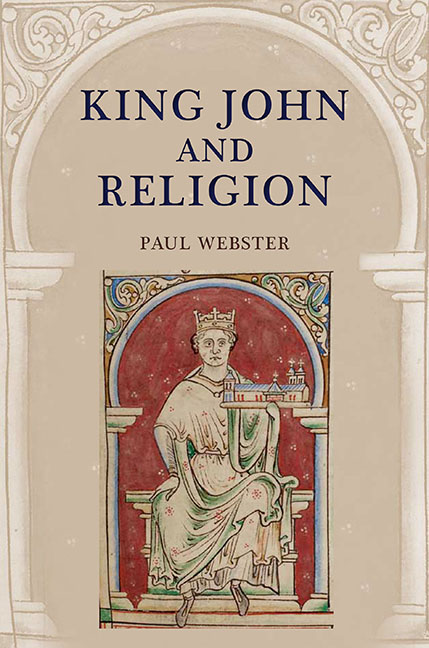Book contents
- Frontmatter
- Dedication
- Contents
- List of Illustrations
- Acknowledgements
- Abbreviations
- Introduction
- 1 The Mass
- 2 The Saints
- 3 Powerhouses of Prayer
- 4 Family
- 5 Charity and Almsgiving
- 6 Religion, Politics, and Reputation: The Interdict and King John’s Excommunication
- 7 Peace with the Pope: Diplomacy, Personal Religion, and Civil War
- 8 King John’s Deathbed and Beyond
- Conclusion
- Bibliography
- Index
- Other volumes in Studies in the History of Medieval Religion
8 - King John’s Deathbed and Beyond
Published online by Cambridge University Press: 07 May 2022
- Frontmatter
- Dedication
- Contents
- List of Illustrations
- Acknowledgements
- Abbreviations
- Introduction
- 1 The Mass
- 2 The Saints
- 3 Powerhouses of Prayer
- 4 Family
- 5 Charity and Almsgiving
- 6 Religion, Politics, and Reputation: The Interdict and King John’s Excommunication
- 7 Peace with the Pope: Diplomacy, Personal Religion, and Civil War
- 8 King John’s Deathbed and Beyond
- Conclusion
- Bibliography
- Index
- Other volumes in Studies in the History of Medieval Religion
Summary
King John died on the night of 18/19 October 1216, during a civil war very much of his own making, far from being master of his kingdom. Nonetheless, evidence for royal religion can be found up until the very end. Days before his death, part of the king's baggage train became trapped in quicksands whilst his entourage undertook a dangerous estuary crossing before the tide went out, in the so-called ‘disaster in the Wash’. Losses included John's chapel and the relics carried with it, suggesting that even amidst a crisis in which the king travelled the country at speed and on a war footing, he kept means of attending services close at hand.
John was already ill at this time, and perhaps knew some days before his death that he was suffering his last illness, probably dysentery. On 10 October, the king made a grant to Margaret de Lacy, for her Hospitaller foundation at Aconbury (Herefordshire). Between 1208 and 1211, John had hounded Margaret's father, William de Briouze, into exile and ordered the deaths of her mother, Matilda, and her brother (also William). He had confiscated the lands of Walter de Lacy (Margaret's husband), who had supported Briouze, only restoring them in the period 1213–15. Walter could well have secured the concession from the dying king, as ‘a constant presence in the royal entourage in the dog days of John's rule’. Equally, John's grant could have been motivated by political–religious reasoning: appearing to atone for his actions whilst seeking to regain and retain the Lacys’ goodwill. A sense of reconciliation is suggested by Margaret's later comment, in correspondence with Pope Gregory IX, that the community had been founded in John's memory. A further letter issued from John's deathbed, requesting final absolution from all his sins from Pope Honorius III, suggests his concern for the future of his soul. These examples seem representative of the fears of a dying man, ‘significant of the remorse awakened in him … by the terror of approaching death’. They were also in keeping with John's longer-term attitude. He realised the importance of provision for his soul.
- Type
- Chapter
- Information
- King John and Religion , pp. 173 - 192Publisher: Boydell & BrewerPrint publication year: 2015

